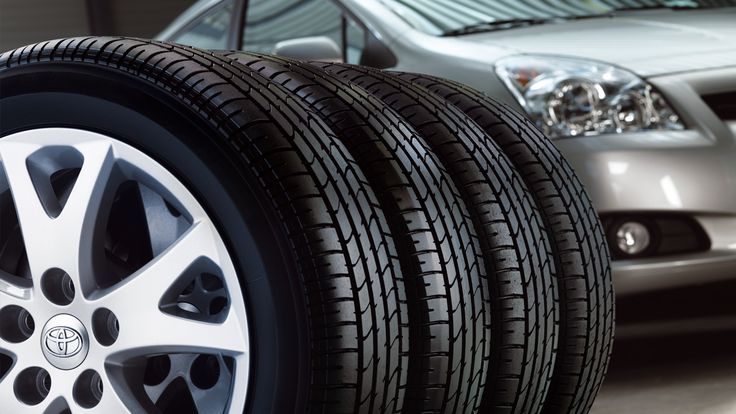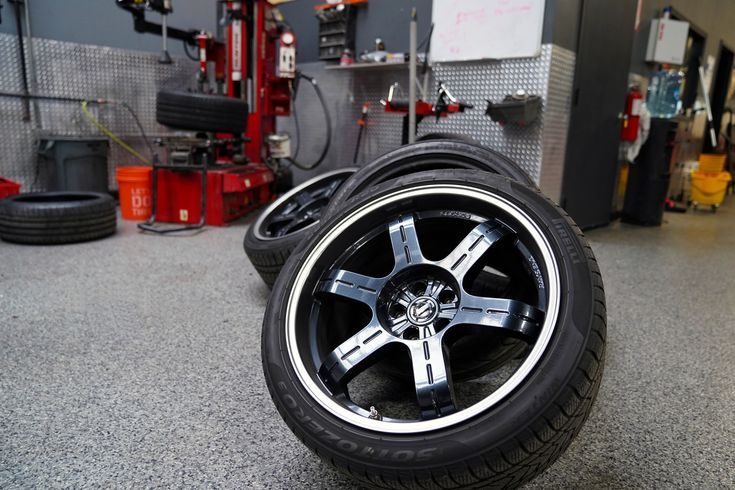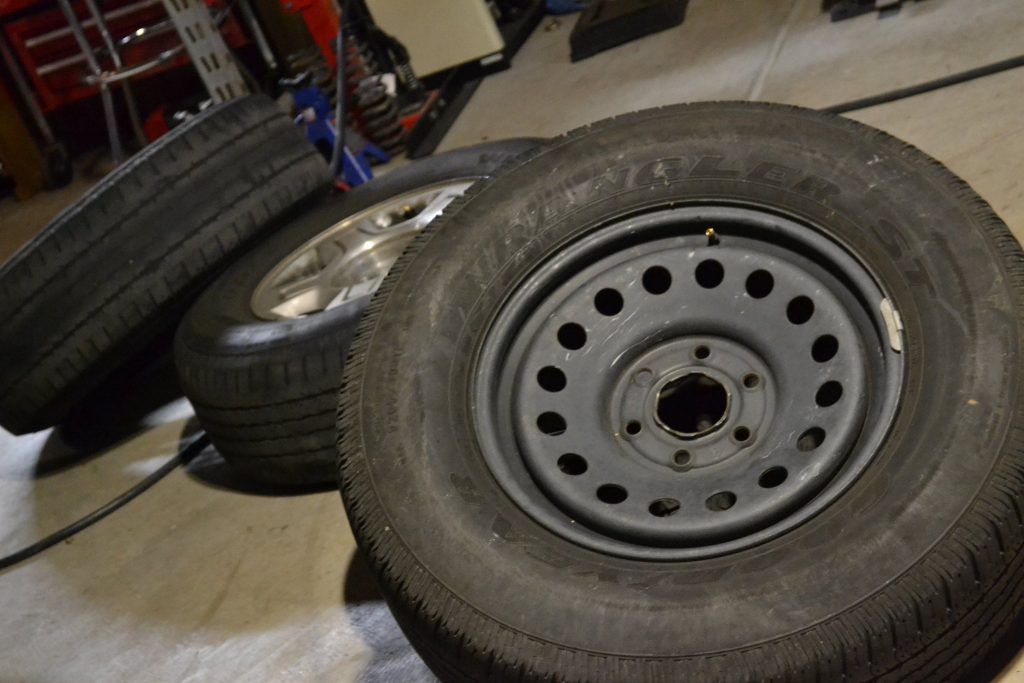Tires are an important part to ensure your safety. The surface area of the tire exposed to the road is where all of the car’s activities take place: braking, traction, steering control, and absorbing road shock. Have you ever wondered “how are tires made?” and “ what are the parts of a tire?” Although it looks like a simple rubber, it contains a lot of detailed parts that every driver should know. Today Car From Japan will help readers discover everything about the tire!
Contents
How Are Tires Made?
What are tires made of? It will be a surprise when you know that there are more than 200 different components in a tire. These components play an important role in keeping safe, saving fuel, ensuring operational performance, and being environmentally friendly.
These components are divided into five groups:
- Natural rubber: is the main component of tread layers
- Synthetic rubber: As a component of the tread surface of the tire.
- Carbon black and silica: Used as a reinforcing agent to improve tire durability
- Cable reinforced with fabric and metal thread: Is the “bones” of the tire, shaping and providing rigidity to the tire.
- Much of chemical agents: Offers unique features such as low rolling resistance or extreme traction

Production process
Today, many types of tires are designed according to specific standards (racing, off-road vehicles) or specific requirements of each car manufacturer.
In the production of a car, making tires also begins with a computer simulation, converting information about the size, quality, and special needs of the vehicle to the computer, and from there calculating and choosing suitable ingredients and designs.
Steps of the tire production:
The production process begins with the selection of rubber as the main raw material and other auxiliary materials. Specifically, tires are usually made from 19% natural rubber (taken from rubber trees grown in Southeast Asia), 38% synthetic rubber (butadiene, styrene, halobutyl rubber), and additives to prevent the effects of ozone and oxygen and help accelerate the vulcanization process.
In addition, 4% synthetic polymer fabric belt (nylon, rayon, and aramid) for reinforcement, 12% metal wire (polycarbon steel) for additional reinforcement, and 26% sealant (carbon black, silicon oxide).
The materials are mixed together by an industrial mixer to form a black compound with the properties of rubber glue and asphalt. This mixing is controlled by computers to ensure uniformity, then the compound is transferred to different specific machines to create the proper shape before assembling them all together. The mixed materials are then sent to specialized machines to make the tire components, before fitting them all together to form the finished tire.
The industrial machine rolls layers together, the first is the inner liner, which is made of rubber, and completely waterproof. The inner liner is very durable and prevents the diffusion of air and moisture. When inflating the tire, the compression inside the tire is extremely large. Next are the layers of plies and beads. Finally, the sidewall and tread layer is added.
The last and most important step is to press the layers together with a mold that has the desired dimensions of the manufacturer. Under a temperature of about 300 degrees Celsius, the molten layers will bond tightly together, in the outermost layer will form the layer of treads that the manufacturer wants.

Learn About Parts Of A Tire
Do you wonder how car tires are structured to be able to create such durability? There are a lot of different parts combined to make a perfect tire. We will tell you about the car tire parts names and the feature of each part:
Beads
Is a metal bar under a thin rubber layer that helps the tire stick to the wheel’s rim, avoids the tire from slipping out of position when the wheel is rolling, and limits the escape of air when inflating the tire. The air pressure in the tire pushes the beads against the rim and holds them in place. Bead is protected from rubbing against the rim by a layer of hard rubber called the lining.
Tread
A tread tire is the outer layer of rubber that protects the lining from abrasion and external damage caused by the impact of the road surface. It is the part that is directly in contact with the road surface and generates frictional force to transmit power and braking force to the road surface. The tread design is designed with many grooves to increase braking efficiency and power transmission. The denser the tread density, the better the traction and resistance. In particular, manufacturers always mark the tire wear point on each tire so that it is easy for users to observe and know when to replace a new tire.
Tire ply
Piles are the frame of the tire. It must be stiff enough to hold under high pressure, but also soft enough to absorb vibrations. The tire cover consists of many layers of tire cords interspersed with rubber. The main function of the body piles is to provide strength and resistance to road surfaces.
Zinc piles are used when trucks often have to travel on long roads (long distances), have a stable and flat road surface structure due to better wear resistance and heat resistance, and a smoother driving feeling.
Nylon tire is used on rough roads, it also withstands external forces better than radial tires, so it is suitable for roads with many obstacles and potholes due to their better ability to withstand collisions.
Belt piles
Belt piles are two or more layers of sturdy wire under the treading. The main function is to provide strength and stability to the tread. They play a role in improving impact resistance and grip. Steel is the most common cord material used in belting.
Sidewall
Area of the tire from bead to tread to the side of the tire and make the protective tire. The sidewall is a place to display a lot of important parameters of a car tire, helping users to distinguish manufacturers as well as choose the right technical parameters for their needs.
Inner Liner
The inner liner is the innermost layer of a tire that starts on the inside. It is a compound bonded to the body of the cord. Even under pressure, this rubber compound will keep the air and function as an inner tube. The inner liner will help to maintain the tire pressure, help you save fuel, and improve the lifespan of tires.
Tire casing
The layer below the tread is the tire casing. Basically, the casing is the foundation on which the tread sits. The casing consists of threads that cross each other from one side of the tire to the other. The casing will supply a cushion and contain air allowing the tire to function correctly. Do you know that the cost of the tire casing makes up about 75% of the total cost of a tire? We think it will be one of the most important car tire parts.
Tire valve stems
In your opinion, what is the role of car tire valves? A tiny valve that plays an important role in the operation of tires and cars. Valve stems are made of metal and rubber. A valve is composed of 3 parts including the body, the valve cap, and the core. It ensures that the car maintains consistent tire pressure according to the manufacturer’s standards and helps the tires stay dry because all moisture entering the tires is prevented. Besides, the valve cap has a particularly important role in helping to prevent dust from clogging the valve. A high-quality valve cap is recommended. Don’t forget to turn the valve cap as soon as the tire pressure is measured.
Final Words
Along with the development of cars, tires are always developed to improve the car’s performance and ensure the safety of users. Tires are not only inflatable rubber blocks but are also equipped with a lot of advanced technology. And have to go through a very rigorous production process before reaching the user. Each type of tire is designed for each vehicle type and adapts to different operating conditions. All properties depend on “how are tires made?”. We believe that when you understand more about the construction also parts of a tire will help you use the tire better. That’s why the article was released!



